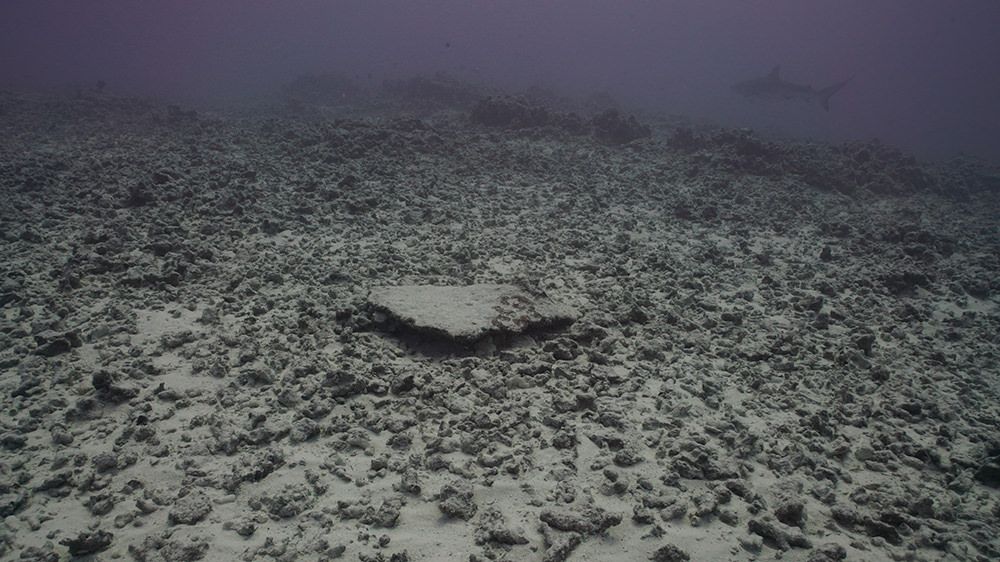Hawaii’s Rapture Reef Was Flattened by Last Year’s Hurricane Walaka
The first NOAA survey since the Category 3 storm hit found the coral reef in Papahanaumokuakea Marine National Monument was demolished
Earlier this month, the NOAA ship Rainier set off on a 22-day survey mission to monitor the coral reefs in Papahanaumokuakea Marine National Monument. When the team descended to Rapture Reef, a football field-sized coral reef in French Frigate Shoals, University of Hawaii at Hilo researcher Kailey Pascoe tells Nina Wu at the Honolulu Star Advertiser that she thought the team had gotten the coordinates wrong. When she first visited Rapture in 2015, it was teeming with life, full of table corals and fish. All of that was now obliterated. “When we got down there, it was quite shocking because it was essentially flat, no coral, and rubble,” she tells Wu.
When the team found an acoustic receiver used by a colleague to study predatory fish in the reef, they confirmed that Hurricane Walaka was to blame for the wreckage. The Category 3 storm, which veered away from hitting Hawaii’s largest islands last October, directly hit the Shoals in Papahanaumokuakea. At the time, researchers knew it had completely submerged a spot of land called East Island, the second largest in the area, and damaged other islands. But they didn’t realize the extent of the destruction under the surface.
“We were expecting some storm damage, some broken coral,” Randy Kosaki, NOAA’s Deputy Superintendent of the Monument, tells Jake Buehler at Earther. The coral reef, he adds, was one of the most beautiful reefs he’d ever seen in his 35 years of diving in Hawaii. “For Rapture Reef to be wiped off the face of the Earth, it was like a punch in the gut.”
That wasn’t the only hit. The entire south side of the atoll appeared to be wiped clean by Walaka, according to Buehler. More bad news came as the team sailed northwest through the monument. There they discovered thick mats of red algae growing along the west and northwest sides of Pearl and Hermes Atoll. Swaths of dead coral were found underneath them.
While the algae has not yet been identified, the team believes it is an invasive species that has made it into Hawaii’s unique coral ecosystem. The state’s reefs are far enough away from Asia and the America’s that they have developed in isolation for millennia, resulting in tons of endemic fish, coral and algae species.
“When you have an invasive species like this come in and basically destroy the existing reef and wipe out the corals and native limu [seaweed and algae species], there’s nothing really there to document,” biologist Heather Spalding tells Wu of the Star Advertiser. “So it’s really disheartening, and important that we limit the spread of this invasive algae, and really try and find out where it occurs now so we don’t spread it further.”
The team suspended other planned surveys, including looking at the north edge of French Frigate Shoals, so they could study the algae mats and attempt to prevent it from doing further damage.
The expedition wasn’t all bad news. The team found a new deep-water coral reef habitat dominated by Sargassum algae. They also found that the reefs off Lisianski Island, which were hit with a major bleaching event in 2014, are on the mend. They even found some indications that suggest Rapture Reef will grow back in time. During the survey, they came across some live coral, less than an inch in size, growing amid the underwater rubble.

